
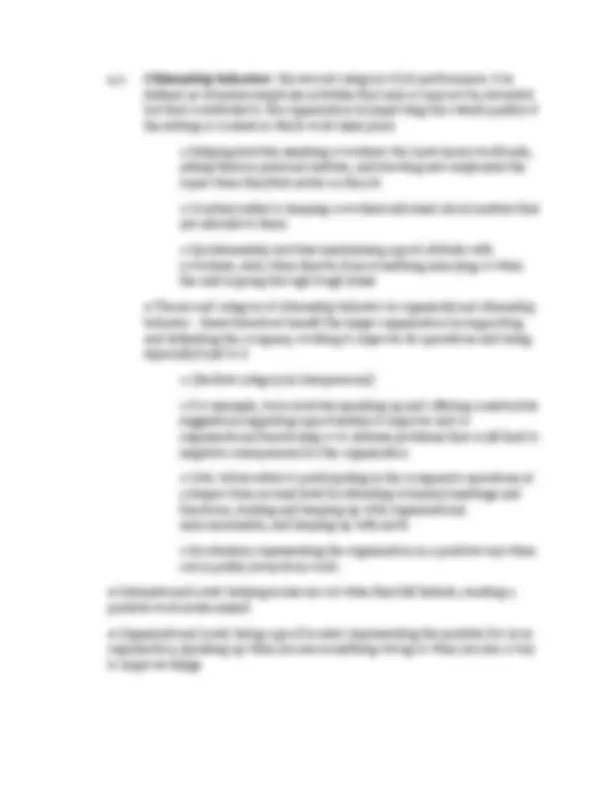
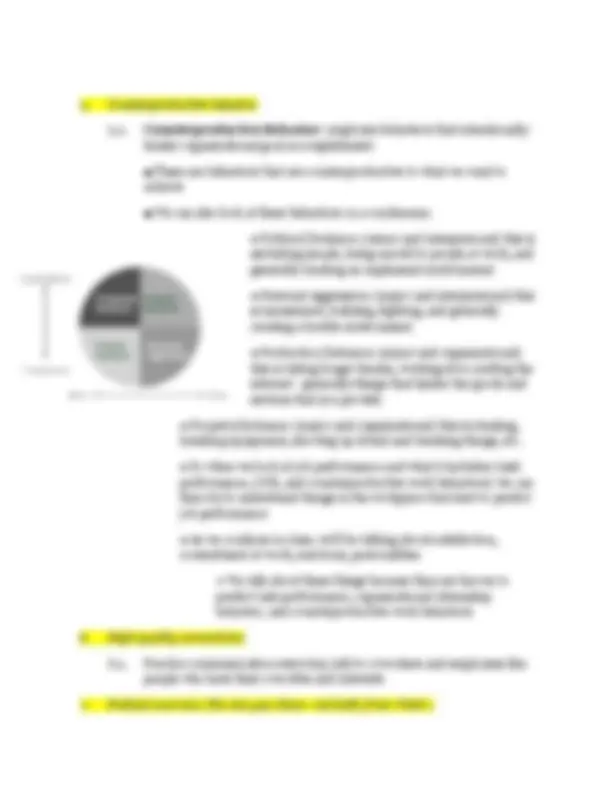

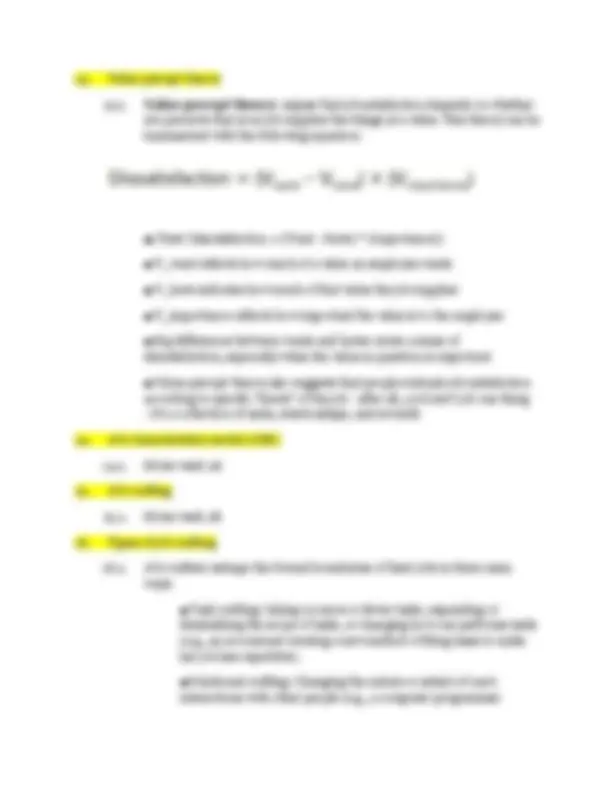
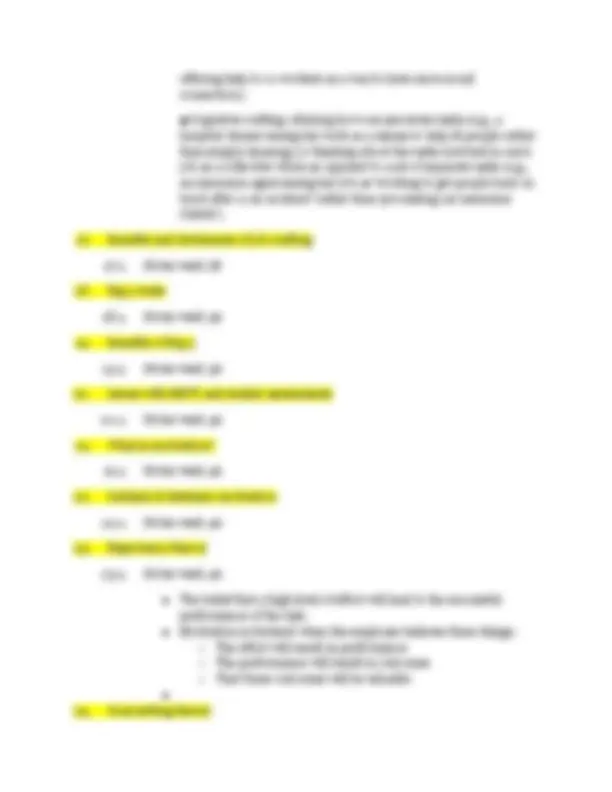
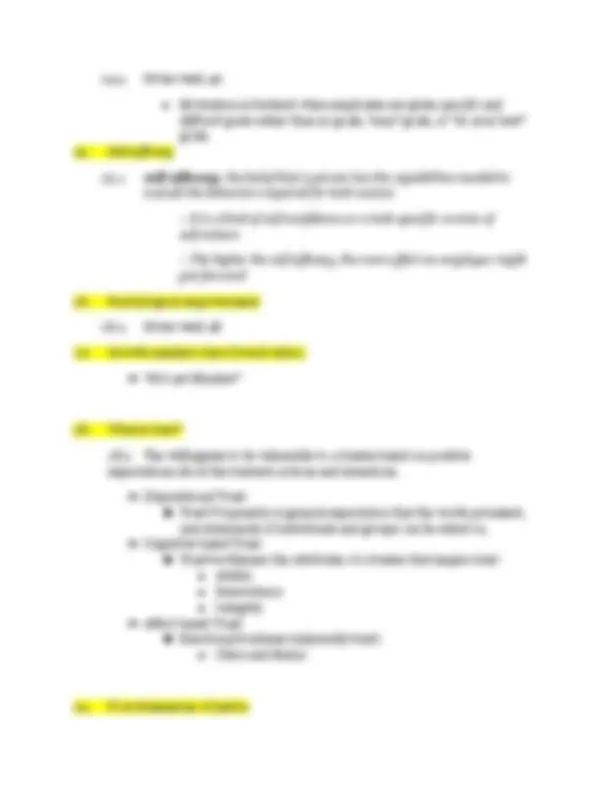


Study with the several resources on Docsity

Earn points by helping other students or get them with a premium plan


Prepare for your exams
Study with the several resources on Docsity

Earn points to download
Earn points by helping other students or get them with a premium plan
Community
Ask the community for help and clear up your study doubts
Discover the best universities in your country according to Docsity users
Free resources
Download our free guides on studying techniques, anxiety management strategies, and thesis advice from Docsity tutors
The document is a study created for Exam 1 for MGMT 311
Typology: Study Guides, Projects, Research
1 / 11

This page cannot be seen from the preview
Don't miss anything!







● Example: for a flight attendant, task performances include announcing and demonstrating safety and emergency procedures, distributing food and beverages to passengers, etc. ■ One way of categorizing task performance is to consider the extent to which the context of the job is routine, changing or requiring a novel/unique solution → can be a mix of routine, adaptive, and creative task behaviors ● Routine task performance - involves well-known responses to demands that occur in a normal, routine, or otherwise predictable way. ○ Employees tend to behave in a more or less habitual way that does not vary ● Adaptive task performance (adaptability) - involves employee responses to task demands that are novel, unusual, or, at the very least, unpredictable ○ In the flight attendant example, a performance could be helping in an emergency landing ● Creative task performance - the degree to which individuals develop ideas or physical outcomes that are both novel and useful
■ Reasons could include that you have a close relationship with a mentor, or because it’s a family business which has supported you and lifted you up so you feel you have to give back, even if they don’t pay you enough or you don’t like it ■ Examples of possible jobs include school teachers, zookeepers, mental health workers - they feel they have an obligation to those they serve ● Commitment is a really important part of creating a HEALTHY work environment and looking at the behaviors of individual employees
24.1. Notes week 4A ● Motivation is fostered when employees are given specific and difficult goals rather than no goals, “easy” goals, or “do your best” goals.
25. Self-efficacy 25.1. self-efficacy : the belief that a person has the capabilities needed to execute the behaviors required for task success ○ It is a kind of self-confidence or a task-specific version of self-esteem ○ The higher the self-efficacy, the more effort an employee might put forward
➔ Distributive Justice ◆ When is the distribution of outcomes or rewards perceived as fair? ● Equity : More outcomes allocated to those who contribute more inputs ● Equality: All team members received the same amount of relevant awards ● Need : Outcomes given to those who need them most ➔ Procedural Justice ◆ When is a decision making process perceived as fair? ● Voice : Opportunity to express views and opinions ● Correctability : Opportunity to appeal ● Consistency: Applied consistently across employees and time ● Bias Suppression : Neutral and unbiased ● Representativeness : Takes into account the concerns of relevant groups ● Accuracy : Relies on accurate information as inputs Particularly important when distributive justice is lacking ➔ Interpersonal Justice ◆ When is interpersonal treatment in the decision-making process seen as fair? ● Respect : Whether supervisors treat you in a dignified and sincere manner ● Propriety : Whether supervisors refrain from making inappropriate remarks ➔ Informational Justice ◆ When is the information communicated perceived as fair? ● Justification : Decision making procedures and outcomes are explained in a comprehensive and reasonable manner ● Truthfulness: Communications are honest and candid